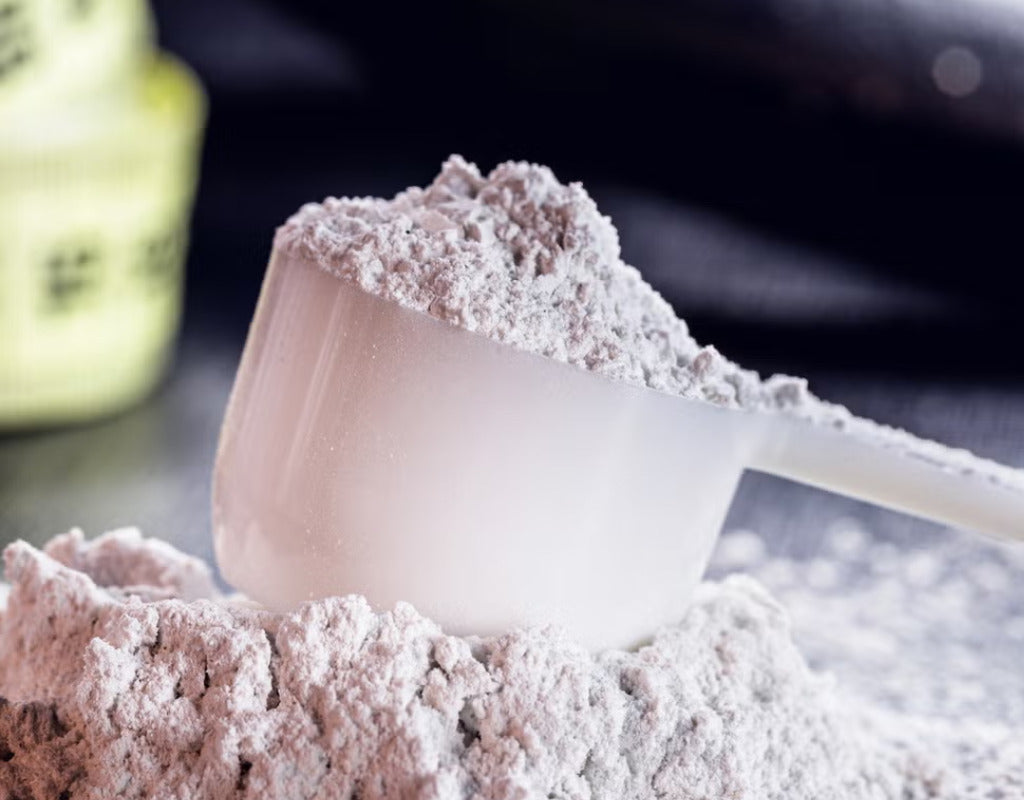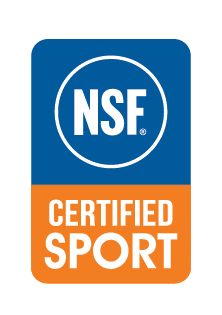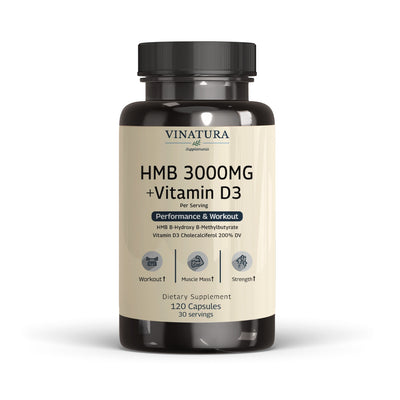
What Does Creatine Taste Like? How To Improve Its Taste?
Have you ever wondered what creatine tastes like? While you feel the taste of the creatine you use is so unpleasant that you can't continue using it; others praise it so much that they have to drink it every day. The following article will answer this question exactly. Don't miss it!
Before exploring further, please read the disclaimer located at the end of this webpage.
Key Takeaways
- Creatine has no taste, but it can vary depending on the type of creatine, how it is mixed, the dosage, etc.
- The way to make creatine dissolve quickly, not have a powdery feeling and taste easy to drink is to mix it with warm water or fruit juice, choose creatine in the form of micro-granules or easy-to-dissolve powder, use immediately after stirring, etc.
- In case you have tried many types of powder but still do not like the taste, consider switching to creatine in capsule/tablet form, which both saves time and limits unpleasant tastes.
What Does Creatine Taste Like?

-
Taste of Pure Creatine
Pure creatine monohydrate powder mixed with water usually has a mildly salty to noticeably sour taste. This flavor is a natural characteristic of creatine and should not be mistaken for contamination or spoilage. The taste is generally neutral to slightly unpleasant for some users, but it is typical of unflavored creatine.
-
Texture
Creatine monohydrate has low solubility in water, meaning it often does not dissolve completely and may leave a gritty or chalky residue at the bottom of the glass or in the mouth.
This is due to its crystalline structure—not a sign of poor quality. First-time users may find this texture unfamiliar or mildly uncomfortable. To minimize this effect, consider using micronized creatine, which has finer particles and improves solubility, resulting in a smoother texture when mixed.
In the discussion Is creatine supposed to be tasteless?, about 40% of people agreed that this substance is completely odorless and tasteless. Meanwhile, more than 40% of other users found creatine unpleasant, so they had to struggle a lot mentally when they clearly felt the bitter taste.
The powdery feeling in their mouths lasted for hours. And 20% of users found that the taste of creatine was not as bad as they read online, on the contrary, it was quite delicious and easy to drink.*
Similarly, in the topic Does Creatine taste bad for anyone else?, about 10 people left comments that creatine had no smell or taste at all. But there were also 8 users who found the taste of creatine to be really terrible, similar to crushed chalk powder. They continued using it to support their fitness goals, despite disliking the taste.*
With the above stories, what does creatine actually taste like? As for creatine monohydrate, this is a substance that has absolutely no taste. The flavor of creatine in each product you use is decided by the manufacturer.
For example, if they want users to drink it more easily, they can mix it with sweeteners, flavorings such as strawberry, chocolate, etc. (these substances must be guaranteed to be safe for users).
What Affects the Taste of Creatine?
Besides the manufacturer's decision, the taste of creatine also varies depending on the following factors:
Forms of Creatine
- Creatine Monohydrate: Creatine monohydrate powder gives you a powdery feel, sometimes a little bitter or slightly sour but not too unpleasant as many people reflect on social networks. In fact, this often happens because you stir/mix the creatine powder incorrectly, causing the powder to clump.
- Micronized Creatine: This is the version chosen by many manufacturers to improve the solubility of creatine in the solution. This avoids clumping to the maximum. Therefore, after just a few simple steps, the mixture is completely dissolved in water and has no taste, similar to when you are drinking regular water, without affecting the taste of the solution you use.
- Creatine HCl or Buffered: Because of the addition of an acidic buffer, this type of creatine often has a more sour taste than creatine monohydrate.
- Creatine in capsule/tablet form: This is a type of creatine extract that is completely odorless and tasteless. Unless the user is very sensitive to the scent, they may taste a little bitter.
Mixing Liquid
The simplest way to use creatine is to mix it with water. At this point, you will clearly feel the original flavor of creatine (in fact, there is no flavor at all) and sometimes feel a bit powdery because the creatine has not completely dissolved. Or if you mix it with fruit juice, of course it will be easier to drink, sour or sweet depending on the type of fruit.
Besides, some people mix creatine with milk to make a top protein shake. Indeed, this method helps to cover up the unpleasant taste of this powder if you clearly feel it, absorb it effectively and provide many other essential nutrients such as vitamin D, calcium, .../p>
However, a disastrous way to mix creatine is definitely with carbonated drinks. This not only reduces the body's absorption capacity but also causes creatine to foam, changing the flavor terribly.
Learn more: What to Mix Creatine With? Best Options for Absorption
How to Avoid the Gritty Texture and Sourness

Drawing from suggestions and real user feedback on Reddit, below are some effective methods to make creatine easier and more pleasant to consume.
Choose Your Creatine Type
Prioritizing the use of Micronized Creatine to improve the solubility of this substance in the solution, or if you cannot find it, consider using creatine in capsule/tablet form or creatine monohydrate powder.
In particular, if you are someone who often travels outside and is not at home much, consider the capsule/tablet form for convenient use when needed. In case of sensitive skin and difficulty using creatine powder or pills, you can switch to gummy form, which has a pleasant taste and is easier to swallow.*
Measure the Dose
You should know the correct mixing technique by adding the correct amount of powder according to the manufacturer's instructions, and mix with warm water. If you use too much powder and too little water, the powder will not dissolve well. Conversely, if you use too little powder, the expected effect will not be guaranteed.*
Select a Liquid
You can combine creatine with whey protein powder, electrolyte drinks, etc. to reduce the unpleasant sour taste and improve the solubility of this powder.
However, if you use creatine mixed with water, you should only use warm water instead of hot water or newly boiled water. Because this type of solution can reduce the stability of creatine, affecting its ability to function when entering the body.*
In addition, some other ways to mix creatine to make it easier to drink are:
- Mix with fruit juice (orange, apple): Makes it easier to drink, reduces the sour or bitter taste but can increase blood sugar if used for a long time.*
- Smoothies, yogurt, whey protein: Increases flavor, convenient if you use these foods every day but can cause you to become overweight.*
- Dry scoop (put in mouth and drink water): Convenient, quick but not suitable for everyone.*
- Mix with BCAA, electrolytes or coconut water: Helps absorb and improve the sour/bland taste but avoid using too many times in a row because it has a negative impact on health with symptoms such as diarrhea, bloating,…*
Mix and Stir
Stirring and shaking well before drinking is really important. Because if the shaking force is not strong enough, the powder cannot reach the maximum dissolution level, then of course you will feel the powder when drinking, difficult to swallow. *
Drink Immediately
It is best to drink it immediately after mixing to ensure the best taste and effectiveness. Because if you do not use it immediately, the undissolved creatine will gradually settle to the bottom, accumulating into large pellets that are difficult to drink. If you cannot use it immediately, you should stir it again before drinking.*
You may also read: Is It Bad To Dry Scoop Creatine? Explore Its Pros And Cons
Why Creatine Doesn’t Dissolve Completely
Creatine monohydrate has a crystalline structure, meaning that its molecules are arranged very tightly. This limits its ability to interact with water molecules, making it difficult to dissolve.
In addition, creatine powder has a certain level of saturation, so when it reaches this point, whether you boil it or add water, the product cannot dissolve, leaving a layer of lumpy powder.
Therefore, there are many reasons why creatine cannot dissolve well, leading to a change in taste when used.
Including the temperature of the water (the warmer the water, the faster the creatine dissolves), the type of creatine (micronized creatine dissolves better than creatine monohydrate powder), the type of solution to mix the powder (creatine is suitable for use with warm water or acidic fruit juice),...
In which, if you add too little water compared to the amount of powder, the ability to dissolve will be much worse than with enough water. You can read this information directly on the product packaging. At the same time, you should understand that creatine powder cannot dissolve completely in water or any other solution (juice, milk, ...).
Therefore, to be able to enjoy delicious creatine, absorb well instead of changing the taste, you should follow the instructions from the manufacturer or consult a doctor/nutritionist before using.
Conclusion
The above article has answered in detail what creatine tastes like. In general, creatine is odorless and tasteless, but sometimes it is a little sour or bitter depending on how it is used or the type of creatine the user uses. If you find yourself too sensitive to the taste of creatine, consider switching to a more suitable type or finding another way to mix it as directed by your doctor or nutritionist to ensure safety.
Testimonial Disclaimer
*The testimonials presented on this website are provided by individuals based on their personal experiences with our products. These testimonials represent individual opinions and experiences, which may not be typical or applicable to all users of our products. Results may vary depending on a variety of factors, including individual health, lifestyle, and adherence to product usage instructions.References
- [1] Harry Lawless, The taste of creatine and creatinine, Chemical Senses, Volume 4, Issue 3, September 1979, Pages 249–258, https://doi.org/10.1093/chemse/4.3.249
Author

Product Disclaimer
Including an ingredient or study does not evaluate, endorse, or recommend any Vinatura product or any third-party product. Some ingredients discussed may not be used in any Vinatura product.
The content of the articles has not been evaluated by the Food and Drug Administration (FDA) and is not intended to promote or endorse any specific product. Any products sold on this website are not intended to diagnose, treat, cure, or prevent any disease.
Opinions and Endorsements
Any claims, statements, or opinions expressed in the articles are those of the author(s) and do not necessarily reflect the views or opinions of the manufacturers of the dietary supplement products. The products sold on this website are separate from the content of the articles and are not directly endorsed or associated with the information presented here.
Liability Disclaimer
The author(s) of the articles, website, and manufacturers of the dietary supplement products do not assume any liability for any potential consequences arising from the use of the information provided in the articles. Ingredient effects, dosages, and safety vary by individual, formulation, and context; some ingredients interact with medications or may be unsuitable during pregnancy or lactation. It is recommended that individuals consult with a qualified healthcare professional before making any dietary or lifestyle changes, including the use of dietary supplements.
Product Usage
Please refer to the product labels and packaging for specific usage instructions and guidelines for the dietary supplement products sold on this website.
Customer Support
For any concerns or questions regarding the dietary supplement products, please contact our customer support team, who will be more than happy to assist you.






Leave a Comment
Be the first to comment.
What do you think?